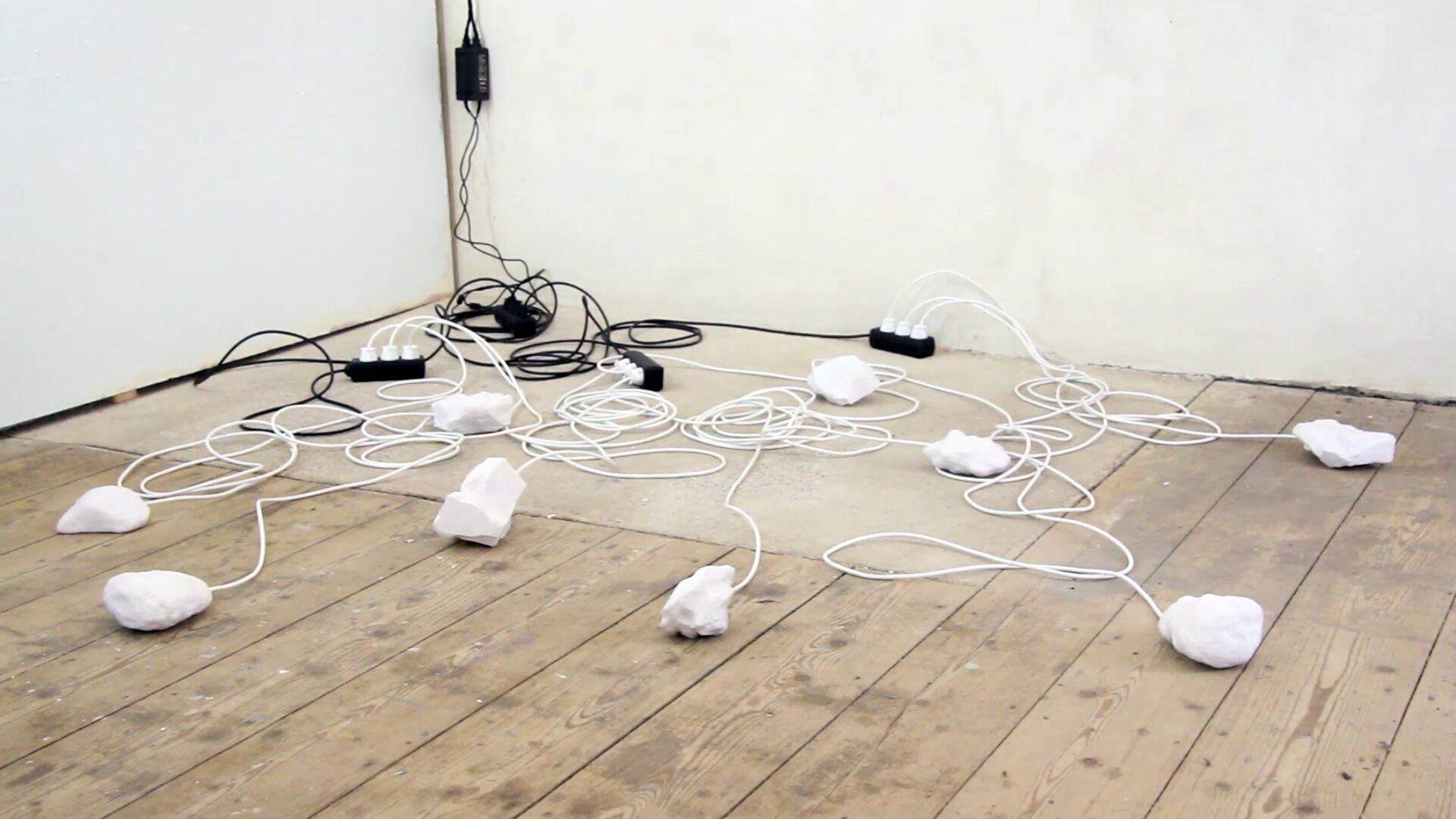You are the help until help arrives
2022
video installation
The images of the video work “You are the help until help arrives” seem like the sequences of an escape dream. Everything is supposed to happen very quickly, but the movements coagulate as if dominated by a great inertia, in slow motion. The woman in the first scene, lying on a blanket in the entrance of a house, looks as if she has fallen asleep. It is not possible to say exactly whether the movements of her legs are conscious or merely instinctive. Does she need help or would it be rude to wake her? Afterwards, people descend a staircase like sleepwalkers, revealing a human body lying on the staircase. In addition to the question of the condition of the person lying on the stairs, the viewer is forced to wonder about the reasons for the pedestrians’ ignorance. This is followed by a scene showing people kneeling and crouching on a meadow. A man holds an upturned white folding chair over his head. A man stands between the crouching people. Is their attitude towards him, or are they afraid the sky might fall on their heads? As the scenes continue, it becomes clear what this is all about. The footage was shot during a Community Emergency Response Team (CERT) exercise, a community-based disaster drill in a neighbourhood of the city of Los Angeles in the US state of California, located on the San Andreas Fault. The reason for the exercise is the expectation of a magnitude 9 earthquake – a “Big One” – the effects of which would be so devastating that official emergency mechanisms would fail and communication and infrastructure would temporarily collapse. In the aftermath of such a disaster, large sections of those affected in the metropolitan region would have to rely on themselves and the people in their immediate vicinity.


The title of the work quotes one of the memorable guiding principles of the disaster exercise community: “You are the help until help arrives.” First of all, this sentence can be read as a call for first aid. It reminds us that professional help is not always on hand when it is needed and appeals to the layperson to build a life-saving bridge until emergency rescue arrives through a minimum of knowledge and practice. On further reflection, however, this sentence also reveals a fundamental logic of social and technical systems. For as long as they function as usual, their processes follow certain predetermined rules and orders. Every element of such a system serves a certain purpose or has an intended use. A chair is used for sitting. A T-shirt is used as a garment. A bricklayer builds walls and a paramedic rescues people in distress. The shock of a disaster confuses this order. Chairs become stretchers, T-shirts become bandages and bricklayers become paramedics. In this sense, “You are the help until help arrives” opens up a utopian space between two functional system states and interrupts the logic and course of our usual reality for a brief moment by turning the representative and provisional into the actual and real. “You are the help until help arrives”. What in everyday life has always been practised by the CERT community only as a fictitious scenario, as a play, becomes reality during the disaster – and only then. People who in real life are only ever actors in disaster productions become real rescuers in the unreality of the disaster. In the interruption of the regular programme by the disaster, the components that are otherwise integrated into the processes of the system are left to themselves. On the one hand, this anarchic state leads to disorientation and chaos; on the other hand, it is equally a moment of self-realisation – of personal responsibility, creativity and improvisation. Catastrophe brings out the best and the worst in people. In its immediacy, it seems, the true faces of people are revealed that are otherwise hidden under the masks of their social roles.


Analogous to the interruption of the continuous processes by the catastrophe, the sequences of the video work were slowed down to such an extent that the breaks in the flow of the film – the transitions between the individual frames – became visible and its coherence disintegrated into a series of individual images. The breaks that were revealed were then smoothed out by the interpolations of an algorithm. In this method, new computer-generated images are created from the differences between adjacent frames to fill the gaps created by the slowed playback. These images are generated on the basis of assumptions, calculations, probabilities and approximations, similar to the imagination of fictional disaster scenarios. What actually happens in the area between two images can no more be calculated with definite certainty than the course of a disaster can be precisely predicted. However, both gaps can be filled with an infinite variation of possible scenarios and designs. The gap and rupture thus reveal themselves not only as an abyss and danger, but also as a space of possibility and thus as a prerequisite for creative processes and free and self-determined action. Future fictions, drama and the design of catastrophic scenarios reveal themselves as the expression of a life-saving capacity for fantasy.

